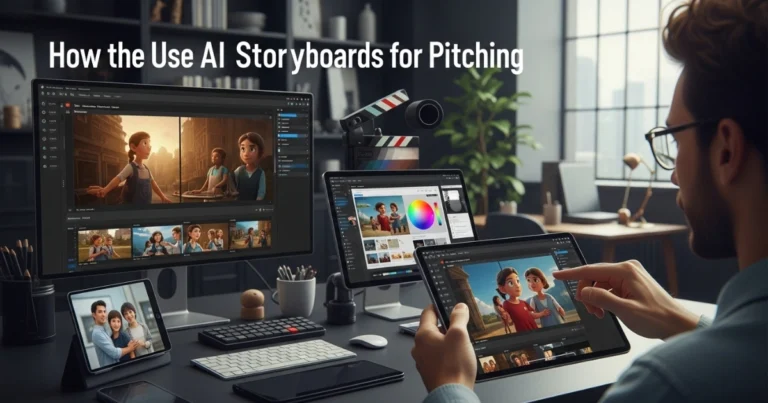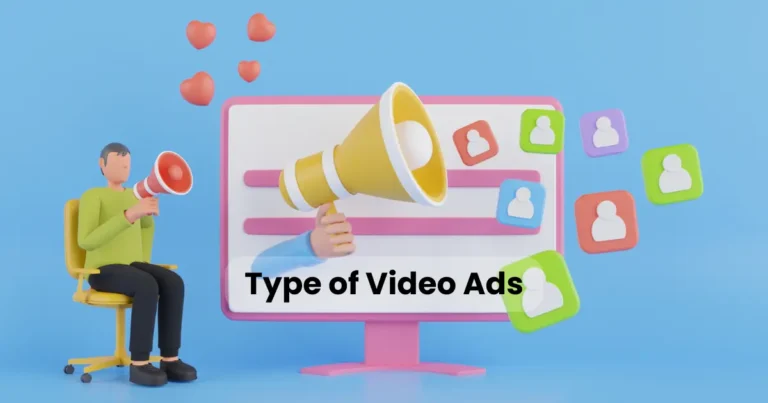Spark to System In Digital Storytelling Guide

Contents
- 1 What Is Digital Storytelling?
- 2 Step 1: Finding the Spark
- 3 Step 2: Building the Narrative Framework
- 4 Step 3: Choosing the Right Digital Tools
- 5 Step 4: Optimizing for SEO
- 6 Step 5: Engaging Your Audience
- 7 Step 6: Measuring Success
- 8 Case Studies: From Spark to System in Action
- 9 Common Pitfalls to Avoid
From spark to system in digital storytelling, the journey of crafting compelling narratives in the digital age is both an art and a science. Every story begins with a single idea—a spark—that ignites creativity. However, turning that initial inspiration into a structured, impactful digital narrative requires a systematic approach. Whether you’re a content creator, marketer, or business owner, mastering digital storytelling can captivate audiences, build brand loyalty, and drive engagement. This article explores the process of transforming a fleeting idea into a cohesive storytelling system, offering actionable strategies to create narratives that resonate across platforms. By blending creativity with structure, you can craft stories that not only entertain but also connect deeply with your audience.
What Is Digital Storytelling?
Digital storytelling combines traditional narrative techniques with modern technology to create immersive, interactive experiences. Unlike traditional storytelling, which relies on spoken or written words, digital storytelling leverages multimedia elements like videos, images, audio, and interactive features to engage audiences. The goal is to evoke emotions, convey messages, and inspire action in a digital environment.
The concept of from spark to system in digital storytelling emphasizes the evolution from a raw idea to a polished, strategic narrative. The “spark” represents the initial creative impulse—an emotion, theme, or message you want to share. The “system” refers to the structured process of refining that idea into a cohesive story delivered through digital channels like social media, websites, or apps. This approach ensures your story is not only creative but also purposeful and optimized for maximum impact.
Why Digital Storytelling Matters
In today’s fast-paced digital landscape, storytelling is a powerful tool for standing out. According to a 2023 study by HubSpot, 55% of consumers are more likely to remember a brand if it tells a compelling story. Moreover, narratives that evoke emotion can increase engagement by up to 300%. By transitioning from spark to system in digital storytelling, brands and creators can harness this power to connect with audiences on a deeper level, foster trust, and drive conversions.
Step 1: Finding the Spark
Every great story begins with an idea. The spark is the seed of your narrative—a moment of inspiration that captures your imagination. It could be a personal experience, a customer’s journey, a brand’s mission, or a universal theme like hope or resilience. To find your spark, consider the following strategies:

Brainstorming Creative Ideas
- Tap into Emotions: Reflect on what moves you or your audience. Is it a story of overcoming adversity, celebrating success, or exploring a unique perspective?
- Identify Your Audience’s Needs: Understand your target audience’s pain points, desires, and interests. A spark that resonates with their emotions will create a stronger connection.
- Draw from Real-Life Experiences: Authentic stories often stem from real events. For example, a small business owner might share their journey of launching a product to inspire others.
Refining the Spark
Once you’ve identified your spark, refine it into a clear concept. Ask yourself:
- What is the core message or theme?
- Why does this story matter to my audience?
- How can I make it relatable and engaging?
For instance, if your spark is a customer’s success story, the core message might be empowerment through your product or service. This clarity sets the foundation for transitioning from spark to system in digital storytelling.
Step 2: Building the Narrative Framework
With your spark in hand, it’s time to create a structured narrative. A storytelling system organizes your idea into a format that captivates and retains your audience’s attention. Here’s how to build a robust framework:

Define Your Story’s Structure
Every compelling story follows a basic structure: beginning, middle, and end. In digital storytelling, this translates to:
- Hook: Grab attention immediately with a powerful opening. For example, a striking statistic, a bold question, or a vivid image can draw viewers in.
- Journey: Develop the narrative by introducing characters, conflicts, or challenges. This is where you build emotional connection and context.
- Resolution: Conclude with a satisfying payoff, whether it’s a solution, a call to action, or an inspiring message.
Incorporate the Hero’s Journey
The Hero’s Journey, a classic storytelling framework, is highly effective in digital narratives. It involves a hero (your protagonist or brand) facing challenges, undergoing transformation, and emerging stronger. For example, a fitness brand might tell the story of a customer (the hero) overcoming obstacles to achieve their health goals, with the brand as the guiding mentor.
Align with Your Brand’s Voice
Your narrative should reflect your brand’s tone and values. Whether it’s playful, professional, or heartfelt, consistency ensures authenticity. For instance, a tech company might use a sleek, innovative tone, while a nonprofit might adopt a compassionate, human-centered voice.
By establishing this framework, you’re moving from spark to system in digital storytelling, ensuring your idea evolves into a structured, impactful narrative.
Step 3: Choosing the Right Digital Tools
Digital storytelling thrives on technology. Selecting the right tools enhances your ability to deliver a polished, engaging story. Here are some key tools and platforms to consider:

Multimedia Elements
- Video: Platforms like YouTube or TikTok are ideal for short, engaging videos. Tools like Adobe Premiere Pro or Canva can help create professional-grade content.
- Images and Graphics: Use tools like Canva or Photoshop to design visually appealing graphics that complement your narrative.
- Audio: Podcasts or voiceovers add depth. Tools like Audacity or Anchor make audio production accessible.
- Interactive Features: Incorporate quizzes, polls, or clickable elements using platforms like Typeform or Storyly to boost engagement.
Content Management Systems (CMS)
A CMS like WordPress or Squarespace allows you to organize and publish your story seamlessly. These platforms support multimedia integration and SEO optimization, ensuring your story reaches a wider audience.
Social Media Platforms
Each platform has unique strengths:
- Instagram: Ideal for visual storytelling through Stories, Reels, or posts.
- LinkedIn: Perfect for professional or B2B narratives.
- TikTok: Great for short, viral content that captures trends.
By leveraging these tools, you create a system that amplifies your spark, making it accessible and engaging across digital channels.
Step 4: Optimizing for SEO
To maximize your story’s reach, SEO optimization is crucial. By incorporating from spark to system in digital storytelling strategically, you can boost visibility without compromising creativity. Here’s how:

Keyword Integration
With a keyword density of 1%, use from spark to system in digital storytelling naturally in headings, subheadings, and body text. For a 3000–3500-word article, this means approximately 30–35 mentions. Avoid keyword stuffing by spreading the phrase evenly and using synonyms like “digital narrative creation” or “storytelling process.”
Optimize Headings and Subheadings
Use H2 and H3 tags to structure your content. Include the main keyword in at least one H2 heading and a few H3 subheadings. For example:
- H2: From Spark to System in Digital Storytelling: A Step-by-Step Guide
- H3: Crafting the Spark for Your Narrative
Enhance Readability
- Short Paragraphs: Keep paragraphs to 2–3 sentences for easy scanning.
- Bullet Points and Lists: Break up text to improve user experience.
- Transition Words: Use words like “however,” “therefore,” “additionally,” and “for example” to guide readers smoothly through your content. Aim for transition words in 30–40% of sentences.
Internal and External Linking
- Internal Links: Link to other relevant blog posts on your site to keep readers engaged.
- External Links: Reference credible sources (e.g., HubSpot, Moz) to build authority.
Optimize for Mobile
Ensure your story is mobile-friendly, as over 50% of web traffic comes from mobile devices. Use responsive design and test load times to enhance user experience.
Step 5: Engaging Your Audience
A successful digital story doesn’t just inform—it captivates. Here’s how to keep your audience hooked:

Create Emotional Resonance
Stories that evoke emotions like joy, empathy, or inspiration are more memorable. For example, a nonprofit might share a story of how their work changed a community member’s life, using vivid imagery and relatable characters.
Encourage Interaction
Incorporate calls to action (CTAs) to prompt engagement. Examples include:
- “Share your story in the comments!”
- “Click here to explore our related resources.”
- “Follow us for more storytelling tips.”
Interactive elements like polls or quizzes also boost engagement. For instance, a quiz titled “What’s Your Storytelling Style?” can keep users on your page longer.
Personalize the Experience
Use data to tailor your story to your audience. For example, segment your email list to send personalized versions of your story to different demographics. Tools like Mailchimp or HubSpot can help automate this process.
By focusing on engagement, you ensure your story resonates, completing the journey from spark to system in digital storytelling.
Step 6: Measuring Success
A storytelling system isn’t complete without analyzing its impact. Tracking performance helps refine your approach and maximize results. Key metrics include:

- Engagement Metrics: Likes, shares, comments, and time spent on page.
- Traffic Metrics: Organic traffic, bounce rate, and referral sources.
- Conversion Metrics: Click-through rates, form submissions, or sales driven by your story.
Use tools like Google Analytics, SEMrush, or Hootsuite to monitor performance. For example, if a video story on Instagram receives high engagement but low conversions, you might adjust the CTA or refine the narrative.
Iterating for Improvement
Based on data, tweak your storytelling system. If a particular platform underperforms, experiment with different formats or adjust your messaging. Continuous iteration ensures your stories remain relevant and effective.
Case Studies: From Spark to System in Action
To illustrate the power of from spark to system in digital storytelling, let’s explore two real-world examples:
Case Study 1: Airbnb’s “Stories from the Airbnb Community”
Spark: Airbnb wanted to highlight the human connections fostered through their platform. System: They created a dedicated section on their website featuring user-generated stories, complemented by videos and photos. The campaign used SEO-optimized blog posts and social media amplification to reach a global audience. Result: Increased brand trust and a 20% boost in bookings, as reported in 2022.
Case Study 2: Nike’s “Just Do It” Campaigns
Spark: Nike aimed to inspire athletes with stories of perseverance. System: They produced short, emotionally charged videos shared across YouTube, Instagram, and their website. Each story followed a clear narrative arc and aligned with Nike’s empowering brand voice. Result: Millions of views and a significant increase in social media engagement.
These examples show how a structured system transforms a creative spark into a powerful digital narrative.
Common Pitfalls to Avoid
As you move from spark to system in digital storytelling, watch out for these mistakes:
- Lack of Focus: A vague or overly broad spark can dilute your narrative. Stay true to your core message.
- Ignoring SEO: Without optimization, your story may not reach its intended audience.
- Overloading Multimedia: Too many visuals or interactive elements can overwhelm users. Balance is key.
- Neglecting Analytics: Failing to track performance limits your ability to improve.
Conclusion
Transitioning from spark to system in digital storytelling is a transformative process that blends creativity with strategy. By starting with a compelling idea, building a structured narrative, leveraging digital tools, optimizing for SEO, engaging your audience, and measuring success, you can create stories that captivate and convert. Whether you’re a marketer, entrepreneur, or content creator, mastering this process will elevate your brand and connect with audiences in meaningful ways. Start with a spark, build a system, and watch your stories shine in the digital world.






